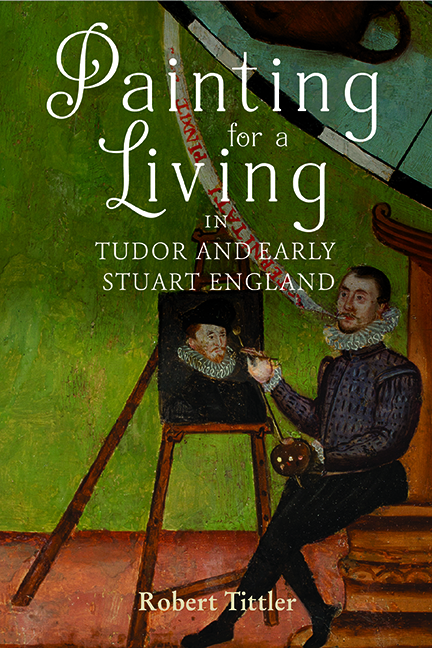Book contents
- Frontmatter
- Dedication
- Contents
- List of Illustrations
- Preface
- Acknowledgements
- Editorial Conventions and Abbreviations
- Part I Introduction
- Part II Kinds of People
- Part III Particular Specialities
- Part IV Ways and Means
- Part V Conclusion
- Bibliography
- Index
- STUDIES IN EARLY MODERN CULTURAL, POLITICAL AND SOCIAL HISTORY
- Frontmatter
- Dedication
- Contents
- List of Illustrations
- Preface
- Acknowledgements
- Editorial Conventions and Abbreviations
- Part I Introduction
- Part II Kinds of People
- Part III Particular Specialities
- Part IV Ways and Means
- Part V Conclusion
- Bibliography
- Index
- STUDIES IN EARLY MODERN CULTURAL, POLITICAL AND SOCIAL HISTORY
Summary
The practice of arms painting had long formed one of the principal sources of income, both for members of the Painter-Stainers’ Company of London and for other companies within London and elsewhere. The scramble for status amongst the middling and upper ranks of society grew in these years to unprecedented intensity, and with it came the need to display the armigerous attestation of that achievement. In these circumstances, arms painting probably provided as much employment as almost any other aspect of the trade. Some painters will have done it as their principal line of work, some more casually, but a very large number will have painted arms at one time or another. Their efforts survive in the painted or carved arms on myriad surfaces, in the institutional records of civic ceremony, in the archives of landed estates, and on record in the College of Arms itself.
Whether in London or elsewhere, the activity of arms painting had been bringing painters and heralds into close (albeit often contentious) contact for a very long time. Sometime in the 1330s, Eleanor de Clare, wife of Hugh Dispenser and grand-daughter of Edward I, commissioned painted glass portraits of eight knights with blazoned cloaks to be set in the clerestory windows of her ‘family church’ of Tewkesbury Abbey. These glass paintings, of Clare's two husbands and six close relatives buried in the Abbey, are not portraits in the sense of the contemporary term contrefois al vif: imitations or ‘counterfeits’ from real life. That would probably have been beyond the capability of their anonymous glass painter. He would have been mightily challenged in any event to depict lifelike facial features on such helmeted figures. But in one of the earliest known family portrait galleries in England, these were nevertheless representations of real people. Heraldic iconography provided the identities which contemporary artistic skill could not. From at least that time forward, the relations between painting and heraldry, and between painters and heralds, remained tightly entangled.
Commissioning a painter to run up a coat of arms or other heraldic devices served visually to promulgate a patron's social standing. When the Crown, or a guild or livery company, college, school, or civic government did so, it made a political statement as well.
- Type
- Chapter
- Information
- Painting for a Living in Tudor and Early Stuart England , pp. 115 - 138Publisher: Boydell & BrewerPrint publication year: 2022



